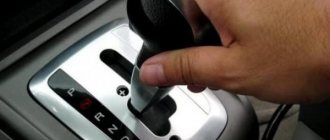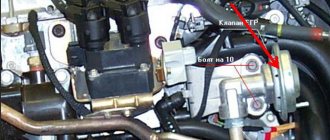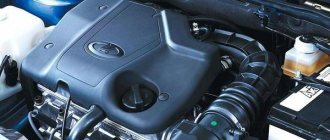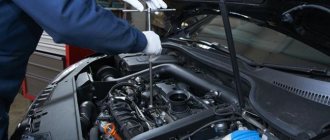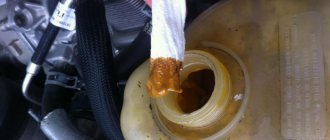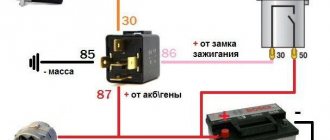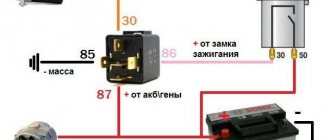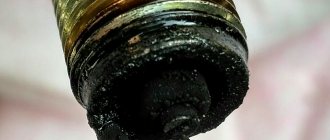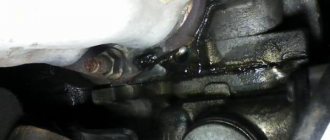When starting off, I release the clutch halfway, add gas, the car starts to accelerate smoothly, release the clutch all the way and add gas, the car jerks several times, then it continues to drive normally. When switching to 2-3-4-5 everything is smooth.
On a cold car this effect does not exist at all; it appears after driving fast or pushing in traffic jams.
Filters, spark plugs, wires, etc. Replaced it, the engine runs smoothly, the clutch has been bled.
Do these symptoms fit the diagnosis of a dying clutch?
How else can you make a diagnosis without an autopsy?
What else could it be?
Should I break into service or drive around until the problem comes out clearly?
Number of guests with me:
Theme Options
Jerks when starting smoothly
Good afternoon Incomprehensible clutch operation. After replacing the disc/basket/release/flywheel set, a problem appeared with jerking when smoothly releasing the clutch pedal (1500 rpm, I calmly released the clutch halfway until the flywheel/disc started to engage, but did not release completely). If you let it idle and very smoothly, then everything is ok. If you give a little more revolutions than usual and quickly release the clutch (for example, 2500 revolutions and quickly and evenly release the pedal), then everything is ok. It feels like the jerking is caused by vibration of the disc in contact with the flywheel. At the same time, it seems to me that the flywheel either slips or clings to the disk. I suspect that I was deceived and supplied with a used (or burnt) flywheel. Otherwise, there are no complaints; it can easily handle loads during a quick start. When switching from 1 to 2, from 2 to 3, etc. There are no unusual vibrations. Z.Y. During active driving, apparently when the clutch warms up, the unpleasant features disappear.
Who thinks about this?
In Pleiades I exchanged for Enthusiasts: Exedy FJD031 - disk; Exedy FJC 530 - basket; SACHS 3151 600 563 - release; flywheel is original (according to Pleiades).
Last edited by zero throttle; 02.09.2014 at 13:26.
Perhaps the flywheel was worn out under the old disc in the same way! crookedly,” but now the disc is straight, so it’s “troubled.”
That's what I suspect. But the flywheel was “changed”. How to prove that it's a scam?
On cars with a manual transmission, problems with the clutch system periodically occur. Necessary repairs have to be made. But after replacing the clutch, the car jerks, or some new defects appear that were not there before the repair (vibration, noise, whistling, knocking appeared). Let's try to talk about all sorts of problems after replacing the clutch and the reasons for the appearance of defects. Let's immediately note that we will talk about passenger cars.
Steering
If the steering rack is faulty, it may well jerk when starting to move. Worn elements of this mechanism are usually not repaired - they are replaced with new ones. Also, the steering rack tips can dangle freely in their positions, which will cause jerks when accelerating sharply and when braking. In this case, the steering wheel wobbles. Damage to the steering column cannot be ruled out (usually this occurs in an accident), which can also create jerks when moving or starting.
If the steering mechanism is faulty, the driver should feel vibrations in the steering wheel, and not just jerks when starting off. And again, nothing can be advised to the driver regarding self-repair. Understanding the steering mechanism is no easier than understanding the gearbox system. So you have a direct route to the service station.
Defects that appeared after replacing the clutch
What does it mean to replace the clutch? This action means changing the driven or driven clutch disc; often both parts are changed at once. In this case, the release bearing must also be replaced. After such an operation, side defects are suddenly revealed that were not there before the repair.
If we think logically, then there are few reasons for the appearance of new malfunctions. Typically this is:
- Unqualified repairs;
- Defect of new spare parts;
- Erroneous diagnostics, as a result of which not all or the wrong parts were replaced, and previously hidden problems manifested themselves in full.
In general, the issue of the appearance of new unpleasant signs is very difficult and is individual in each specific case, but these signs have common characteristic features.
If after replacing the clutch the car jerks
For example, before the repair, the car did not pick up speed well, it was slipping, and the clutch pedal was activated at the very top. All the signs of a worn driven disc were present. After replacing the disk, the car began to jerk. What could happen after the repairs were carried out?
- The issue may be a defective part. This is not so rare when it comes to non-original spare parts. In Russian-made cars (VAZ, GAZ, AZLK, IZH), defects also occur in factory parts. That is, the driven disk is simply curved. On the clutch basket (drive disc), the pressure petals may be at different levels, then the release occurs unevenly and the car jerks.
- The car may jerk due to clutch adjustment. More precisely, it was not performed after replacing the disk. The linings of the new part are much thicker; in this case, the clutch pedal “takes at the very end”. When starting off, the car moves jerkily, and the gear shifts into gear with a crunch.
- The car jerks due to the replacement of not all the parts that needed it. In particular, the cause of jerking is the worn surface of the flywheel under the driven disk. If the flywheel has not been replaced, there may be jerking when driving, and the car may also slip.
Clutch Troubleshooting
If the drive malfunctions, you need to replace its damaged parts: the cable, or, if the clutch release drive is hydraulic, then worn rubber cuffs, springs, hoses, or the master and slave release cylinder assembly.
It is recommended to install the entire master or slave cylinder. Replacing the rubber cuffs will only solve the problem for a short time. After all, the working surface of the liner inside the cylinder is already worn out, and it will only accelerate the wear of the new cuff. After work, be sure to bleed the hydraulic system so that there is no air left in it. Because of it, the clutch release will not work correctly. If the diaphragm spring blades or vibration limiter damper springs break, the entire clutch and basket must be replaced. When installing a new unit, be sure to center the pressure disk.
This is done using a special mandrel or transmission input shaft for that vehicle. The mandrel is inserted into the pressure plate and diaphragm spring, and only then the clutch basket is screwed to the engine flywheel. Then it is tightened well and evenly to prevent the bolts from loosening during operation.
If there is a noise or whistle after replacing the clutch
Many car owners often complain that after replacement, a noise or whistle appears that was not there before. What could be the reasons for the extraneous sound and why does this happen? » alt=»»>
- The new release bearing turned out to be of poor quality or does not contain enough factory lubricant. A whistling or noise appears when you press the clutch pedal. Many people mistakenly believe that the bearing makes noise when the clutch is disengaged. But this is even illogical, in this state the part does not bear the load, and accordingly the noise (whistle) in this state is minimal.
- The clutch basket has unevenness and roughness at the tips of the pressure petals. Typically, spare parts from Russian manufacturers have such a defect. It should be noted that as the parts are ground in, the whistle that appeared initially disappears. You can temporarily eliminate the noise by lubricating the petals with lithol. But this can be done without disassembly on GAZ cars; on front-wheel drive cars, to perform a similar procedure it is necessary to dismantle the gearbox.
- It is possible that before replacing parts, the car owner did not pay attention to extraneous noises such as whistling, as he was expecting repairs. But after replacing the clutch, extraneous sounds remained, which the owner of the car did not expect. Noises are often caused by the gearbox. If, when the clutch is depressed, the unpleasant sound disappears or noticeably subsides, then most likely this indicates wear on the gearbox input shaft bearing.
- The driven disc linings have roughness. A rustling noise occurs when changing gears. There is no need to worry too much ahead of time - the new parts will get used to it, and the defect will disappear during the operation of the car quite quickly.
- The input shaft bearing in the crankshaft may also make noise. When disassembling the car, you should do an external inspection of the bearing. If it is very dry, it must be lubricated with lithol or other suitable lubricant. It is better to replace a clearly worn part immediately.
What's the result?
As you can see, if a car jerks in first gear or a car jerks in second gear, there can be quite a few reasons. If we talk about the transmission, often with manual transmissions and many types of robotic gearboxes, a common cause is a worn clutch (both as a whole and individual elements) or malfunctions in the actuators responsible for the operation of the clutch on a manual transmission.
Finally, we note that if the owner notices that the car begins to jerk in first gear, the car jerks in second speed, etc., it is better not to delay in determining the cause. On the one hand, quick troubleshooting will allow you to avoid more serious problems and costly breakdowns, but on the other hand, jerking and jerking in the first and second gears can cause accidents and other troubles on the road.
The gearbox crunches when changing gears, there is a crackling sound when shifting gears or other extraneous sounds: the main reasons for the crunching or crackling of the gearbox.
If there is a knocking noise after replacing the clutch
As a rule, the cause of knocking after replacing parts is defective parts. In particular, there are dangling damper springs in the driven disk. Therefore, before installing such a spare part on a car, you need to carefully inspect it. Parts of the disk may also be poorly riveted. » alt=»»> Knocks in the clutch area can occur due to a crack in the release bearing bushing (the bushings are often made of plastic). Even at the site where the bushing fits on the flange of the gearbox input shaft, play may form, which also leads to a knocking sound.
Clutch slipping after replacing all its parts
After replacing all elements, adjustment is required, but many car owners ignore this point. The cause is slipping, the car accelerates slowly, the engine speed does not correspond to the speed of the car. The engine just roars, and the car is driving quite slowly, as they say, slipping.
In cars with a mechanical clutch cable, adjustment is made by the cable itself. In hydraulically driven machines, this process is carried out using a clutch rod. In modern cars, you often come across rods that do not have adjustments. But this does not mean at all that it cannot be produced. In such cases, adjustment of the clutch pedal itself is provided, but not everyone knows about this possibility. » alt=»»>
Clutch not fully engaged or not engaged
Slipping usually appears when you sharply press the gas, when the speed increases, but no noticeable acceleration is observed. In this case, a characteristic burning smell may appear. If slippage is detected, which indicates that the clutch is not fully engaged, the reason should be sought in the following:
- the surface of the flywheel, pressure plate (pressure plate) or linings is oily;
- increased production (wear) or burnout of linings;
- insufficient rigidity of the diaphragm spring;
- swelling of the cuffs of the main cylinder (main cylinder), which leads to a slow return of the piston.
First wipe oily surfaces with gasoline or white alcohol, and then dry them thoroughly until completely dry. You should also find out the cause of the oil leak. This may be a violation of the engine or gearbox seals.
If the friction linings have become unusable, replace the HP with a new analog assembly.
Insufficient rigidity of the diaphragm spring does not provide sufficient force for hard contact, which is why slippage occurs. Simply replace the “basket” (pressure plate) with a new set along with the housing.
To restore the performance of the master cylinder, you can replace the cuffs or purchase a new spare part assembly.
The clutch does not disengage when the flywheel sticks to the disc. This sometimes happens when the car is parked for a long time. You need to break the disc by starting to move without pressing the pedal. After accelerating, depress the pedal and brake sharply.
Vibration that occurs after replacing clutch elements
There are few reasons why vibration occurs after replacing a clutch. Vibration usually appears in two forms:
- The pressure plate (clutch basket) is not balanced;
- During assembly, the driveshaft was installed in a different position from the original installation (but this only applies to rear-wheel drive or all-wheel drive vehicles).
By and large, on cars with front-wheel drive, you can inaccurately secure the wheel drive (CV joint), and the movement of the car will be accompanied by vibration and knocking, but this does not happen often.
If the clutch basket creates vibration, you can try moving it to a different position. As a rule, the pressure plate mounts are symmetrical. On many models, the basket is attached to the flywheel with six bolts, and the basket can be placed in three positions. In one position the vibration may disappear completely or be minimal. But it is better to exchange the warranty part immediately for another one. This will be less hassle for the car owner.
New EXEDY clutch. Jerking and vibrations.
I installed a reinforced clutch (kit), but I usually can’t get going, I’ve been driving for a week. It's already annoying. There is a constant stench, like a Kamaz. It shakes from idle. stalls! Or with 2000 then it’s fine, but in traffic jams it’s not ice. Is this how it should be?
Last edited by Mako; 02/28/2012 at 15:32.
The vryx (2.5 bags of milk) contained enhanced organic matter from the same manufacturer, no problems arose. A little tougher than stock, just right for the city. It didn’t stink, it didn’t skid when the slipper hit the floor from the cut-off to normal. toe (ChVN and small details
270-280bhp). Perhaps it was placed crookedly. Did you notice any extraneous sounds?
